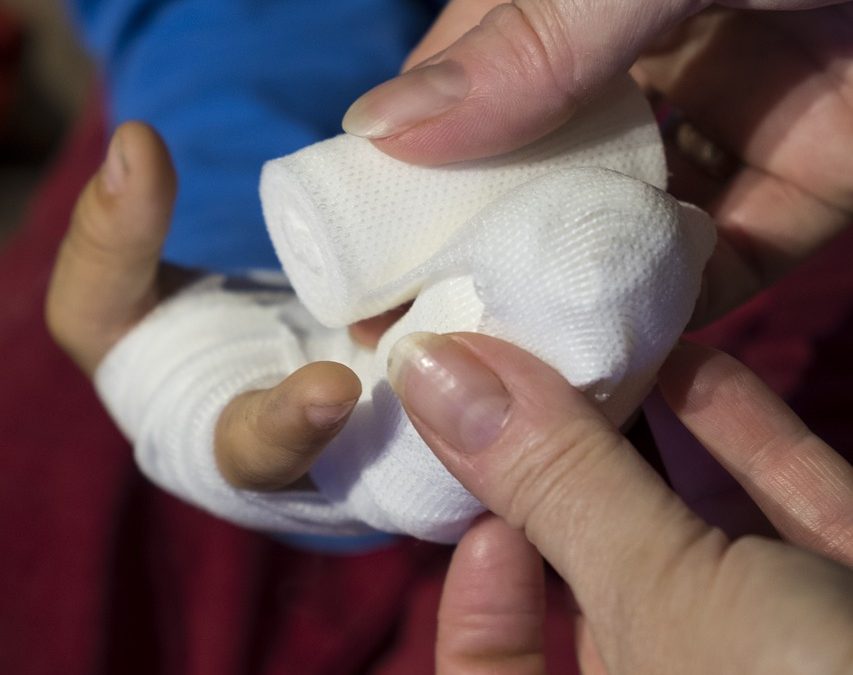How to Prevent Accidents on the Job
Injuries on the job due to poor ergonomics can be costly, not only due to the loss of a worker but also as a result of fines to the business. When an employee suffers a workplace injury, an employer can be immediately open to scrutiny and investigation by OSHA (Occupational Safety and Health Administration) and even local law enforcement.
Accidents can and will happen. And if an accident or repetitive injury happens once, it can surely happen again. So, an employer is responsible for rectifying the condition(s) which directly or indirectly caused the employee’s injury.
Create a Plan for Workplace Injury
As Benjamin Franklin said, “An ounce of prevention is worth a pound of cure.”
As an employer, you want to ensure the safety of your employees so that you can continue to have happy, well-performing people on the job. A culture of safety, ergonomics, and respect goes a long way toward the success of a company. Whether you are preventing a simple cut, a more serious or chronic or repetitive injury, or even death, it’s best to have a plan in place beforehand and prevent an injury altogether–including insurance for such occurrences.
7 Tips to Ensure Ongoing Employee Safety
- Discuss safety and ergonomics frequently with your staff.
- Post safety guidelines and workplace regulations.
- Provide first aid kits, wash stations (as applicable), and AED devices in convenient locations.
- Provide regular on-site safety and basic first aid training.
- Conduct an independent workplace assessment.
- Prominently post emergency contact information or nurse hotline.
- Know how to secure the scene of an accident for local law enforcement and/or OSHA to investigate.
We recommend hiring an ergonomics specialist, such as McClure Ergonomics, to assess your workplace environment in factory, warehouse, and office settings as well as outdoor jobs, transportation and delivery, restaurants, health care, and other industries.
At McClure Ergonomics, we will walk through your workplace, observe employees at work, and speak to your employees about their needs. This will allow us to identify any potential hazards and risk factors for your employees and your business. Once you know all of your potential risks, you can take action to mitigate your risks.
What to Do After an Accident
What you do after an accident is essential for business success. You’ll want to handle any worksite accidents both professionally and with care. When employees feel cared for by their employer, they feel safe and confident to work their best.
First, you want to assess how the injury occurred. Determine if there are any other immediate safety concerns for other employees. Then take steps to reduce or eliminate any further risk of injury. In addition, you’ll want to check with your state regarding any laws covering employees that return to work after a workplace injury.
Allow the employee enough time to comfortably heal. Even minor injuries may take a few days to a few months to heal. So, it’s best to prepare for their temporary absence and create a plan for your employee to safely return to work once they are better. The employee may need to start back to work with limited hours or with some work modifications before returning to a full, functioning schedule.
Employee Responsibility
Although the employer holds much of the responsibility regarding injury prevention, employees also have responsibilities. An employee is responsible for reporting a workplace injury. And an employee should also report a situation that could cause an injury at work.
As an employer, you will need to be familiar with any applicable laws regarding an injured employee’s return to work; these laws can vary greatly from state to state. For example, if a doctor says that an employee can return to work for part-time or modified work and the employer can accommodate the restrictions, state law may require that the employee accept the employment arrangement. However, if he or she refuses to accept a light-duty assignment, the employee may risk forfeiting all or some of their workers’ compensation benefits. Check with your state department of labor to be sure of all current laws and regulations for your state.
The worst thing an employer can do is to ignore workplace and on-the-job safety and not implement a plan to handle accidents or injuries. However, with regular training, accident management plans, and proper attention to ergonomics in the workplace, you can create a culture of safety that will help prevent workplace injuries and accidents.
Need a professional ergonomic assessment of your workplace?
Call McClure Ergonomics Consulting TODAY to Ensure Proper On-the-Job Safety!


Great article!!
Thanks for sharing. If everyone working would obey the last segment, life would be much smoother……
You’re right, Michael. A little forethought can cure just about any mishap before it happens.